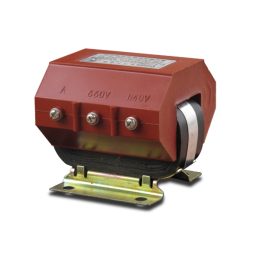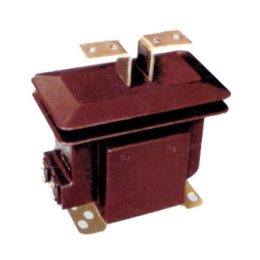3 Voltage Transformer Faults and Solutions: Ensuring Accurate Measurement and Protection
Introduction
Voltage transformers play a vital role in power systems by transforming line voltages to levels suitable for measurement and protection. These transformers, like any electrical equipment, are susceptible to faults in both their primary and secondary circuits, voltage transformer faults can severely affect the entire system. Accurate fault diagnosis and effective solutions are essential for ensuring the reliable operation of voltage transformers. This article discusses the common faults that can occur in voltage transformers and provides solutions to address these issues.
Overview of Voltage Transformers
Definition of Voltage Transformers
Voltage transformers (VTs) are similar to transformers but differ in their purpose. While transformers are used to transfer electrical energy at large capacities (usually in kVA or MVA), voltage transformers are designed to measure and monitor voltage, power, and energy in electrical circuits. Consequently, voltage transformers have much smaller capacities, typically in the range of a few VA, and rarely exceed 1,000 VA.
A voltage transformer consists of a core, primary and secondary windings, and insulation. It operates by adjusting the number of turns in the primary and secondary coils to change the voltage ratio, enabling accurate measurement and protection functions when connected to instruments or protection relays.
Types of Voltage Transformers
Voltage transformers are mainly categorized into two types: electromagnetic and capacitive. Electromagnetic voltage transformers are the traditional type, widely used for lower voltage systems. Capacitive voltage transformers, however, are becoming more prevalent, especially in high-voltage systems (110kV and above), due to their superior performance characteristics in such settings.
Common voltage transformer faults and Their Analysis
Common Faults in Voltage Transformers
Common faults in voltage transformers include:
- Primary Fuse Blowouts: This is typically caused by short circuits between turns or phases, circuit overcurrent, prolonged overloads, or lightning-induced surge currents.
- Secondary Circuit Breaker Trips: Often caused by moisture, corrosion, or physical damage in the secondary wiring, leading to short circuits or ground faults.
- Circuit Breaker Faults: Faults can occur due to loose connections, poor contact in terminal blocks, or other issues, often triggering warning signals.
Primary Fuse Blowout
The most common causes for primary fuse blowouts include:
- Internal Faults in the Transformer Windings: Short circuits between turns, phases, or layers.
- Overcurrent Conditions: Faults in the primary or secondary circuits can cause overloading.
- Long-Term Overload Operation: Rust or corrosion in fuse contacts, leading to poor electrical contact.
- Lightning-Induced Surges: High magnetic fields caused by lightning strikes can cause the core to saturate, leading to excessive currents.
Secondary Circuit Breaker Trips
The secondary circuit breaker trips typically due to:
- Moisture and Corrosion: These can affect wiring connections, causing ground faults or short circuits.
- Internal Short Circuits in Load Equipment: This can also trigger a breaker trip.
Circuit Breaker Faults
Circuit breaker faults often occur when there are loose connections, improper contact at terminals, or wear and tear in the breaker mechanism. These faults can trigger false alarms, requiring timely repairs.
Fault Handling Methods for Voltage Transformers
Primary Fuse Blowout Faults
When a primary fuse blows, the following steps should be taken:
- Isolate the Voltage Transformer: Open the disconnect switch to safely replace the fuse.
- Inspect the Fuse Holder: After replacing the fuse, check for any looseness in the spring clips that hold the fuse.
- Monitor for Hazards: Ensure that the replacement process follows safety protocols, especially in high-voltage areas, to avoid electric shocks.
- Data Collection: If fuse blowouts occur frequently, expand the data collection scope beyond the transformer itself. Analyzing fault records can help identify the root cause.
- Mitigation Measures: If ferroresonance is suspected, measures such as neutral grounding system upgrades or the use of SiC de-resonators can prevent further incidents.
Secondary Circuit Breaker Trips
If the secondary circuit breaker trips, perform the following actions:
- Inspect the Breaker: Check if there is any obvious issue with the breaker.
- Test the Circuit: If no faults are visible, try resetting the breaker. If it trips again, do not reset the breaker and further investigate the cause.
- Avoid Parallel Connections: Never connect a faulty secondary circuit to a working one.
- Monitor Voltage Variations: If abnormal voltage levels are detected, monitor the system continuously and inspect the transformer externally. Stop the transformer and conduct a thorough inspection.
Circuit Breaker Faults
For circuit breaker faults:
- Examine the Breaker Status: Check the secondary side breaker’s status and ensure it is in the closed position.
- Identify Other Alarm Signals: If faults persist, adjust the operating modes of other related devices to prevent erroneous protection actions.
Conclusion
Voltage transformers are crucial components in the power system that ensure the accuracy of voltage measurements and protection operations. Faults in these transformers can lead to significant disruptions in the system, making timely diagnosis and effective solutions essential. Regular inspections, appropriate fault analysis, and proactive maintenance can greatly enhance the reliability and longevity of voltage transformers, ensuring the stable operation of the entire power grid. By following the outlined troubleshooting and maintenance strategies, power system operators can effectively manage and mitigate faults in voltage transformers, ensuring optimal system performance and safety.
- A Discussion on the Saturation Point of Current Transformers: Transformer Protection and Current Protection
- Magnetic Saturation in 20kV Voltage Transformers and Its Adverse Effects
- Fault Handling Considerations for Current and Voltage Transformers
- 3 Voltage Transformer Faults and Solutions: Ensuring Accurate Measurement and Protection
- Causes, and Solutions for Abnormal Heating in 10KV Current Transformers
- Analysis and Troubleshooting of Common Issues with Current Transformers






